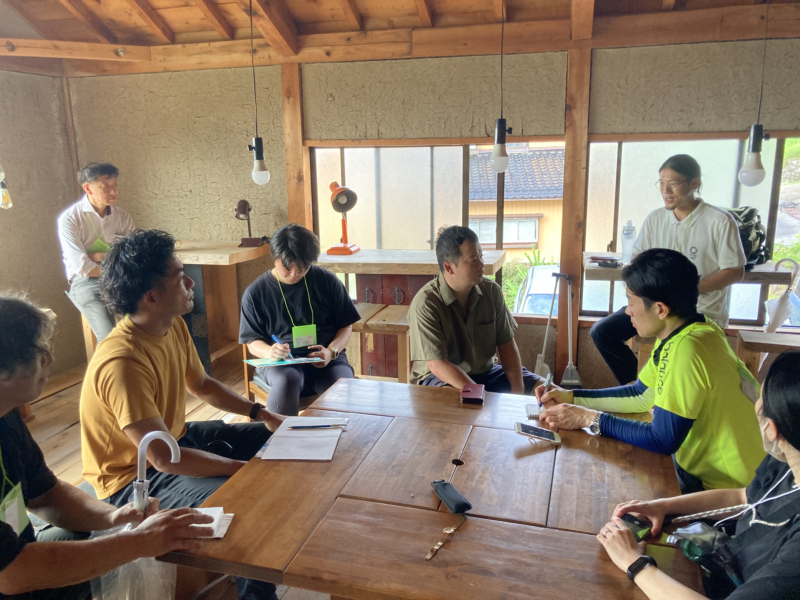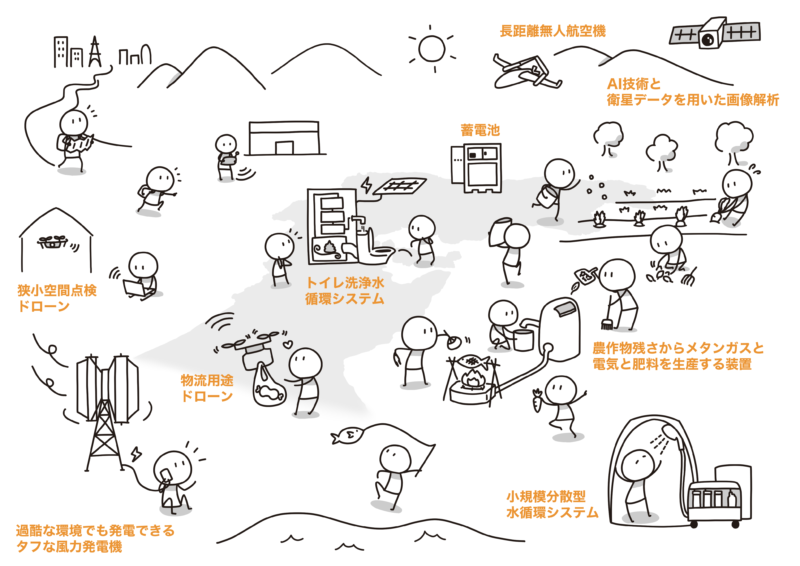News

On July 24, the Livanes Resilience Project, together with participating venture companies, partner companies, and Ishikawa Prefecture, visited the Manoura district of Suzu City, Ishikawa Prefecture. This district is home to Hyundai Village, which has been engaged in advanced activities such as the study of self-reliant and decentralized social infrastructure utilizing deep tech since before the earthquake. On the day of the tour, we looked around the site and divided into themes such as energy, water and toilets, and data utilization, and had discussions on what venture products can do to solve local problems and demonstrate the technology.
Conceptualizing a way of life free from aging infrastructure in the Noto-Manura area, which was under water for seven months after the earthquake.
The Manoura area is a so-called "marginal village" located at the tip of the Noto Peninsula. Before the earthquake, there were about 20 households living there, but more than six months after the disaster, the water supply infrastructure has not been restored and the water supply is still cut off, so most of the households are still living as evacuees outside the village. On the other hand, Mr. Hayashi, the representative of Modern Village, who has been working in this area since before the earthquake, has been continuing his activities by recruiting volunteers from all over Japan to help transform the community into a sustainable village where energy and water can circulate and people can live comfortably while utilizing the latest technology so that life in Manaura can return as soon as possible. We are trying to demonstrate a new way of life through dialogue while gaining the understanding and acceptance of the residents of the Manoura area. In the first three years, about three households will be selected as model cases of self-reliance and recycling, and by the end of six years, the entire Man'ura district will be a sustainable community living in harmony with nature.
Residents, ventures, large and medium-sized companies, local government, and Rivanes will become a team on site.
Privately purchased by Mr. Hayashi, the head of Modern Village, the technology demonstration sites in Manaura are scattered along the winding road leading from the port of Manaura to the mountains. Terraced fields, reservoirs, springs, and old houses remain largely untouched. We discussed a plan to build a facility here that would incorporate the latest technology and allow people to live completely off-grid, independent of electricity and water infrastructure. The challenges are still installation and running costs, as well as the number of households to be served and the business model. Who will bear the costs and who will maintain the facilities? We also discussed how to spread the project to other areas outside of Manura and how to increase the number of people involved in the project, without making any discoveries. All participants reaffirmed that this project will take 10 years to complete, and promised each other that from this point on, residents, technology ventures, companies that support them, and local governments will work together to continue discussions toward a demonstration project.
Participant's Voice
From the standpoint of residents, it is good to demonstrate the technology, but please do not leave the demonstrations unfinished and do not leave the facilities unattended.
I wonder how many people will come back to this village in the future; even if each product or project is wonderful, business cannot exist without people.
In order to make it sustainable, we would like to discuss the long term, taking into account the formation of communities and the values of Generation Z.
As for how to attract people, we need to change our approach depending on the distance traveled from major cities. It would be interesting to create and test a carbon offset system for travel. It would also be effective to link this with educational activities.
We need to package multiple technologies to meet local needs. We need to fill in the missing pieces in the current team.

Image of Deep Tech Application in the Maura District - A picture of the discussion
Affiliation of tour participants
Deep Tech Venture
interpoint (interword separation)WOTA Corporation: Small-scale decentralized water circulation system
interpoint (interword separation)e6s Corporation: Toilet flushing water circulation system
interpoint (interword separation)Environmental Microbiology Laboratory, Inc.: Equipment for producing methane gas, electricity, and fertilizer from agricultural crop residues
interpoint (interword separation)Chalenergy Corporation: Tough wind turbine generator that can generate power even in harsh environments
interpoint (interword separation)Terra Labs Corporation: Wide-Area Disaster System Using Long-Range Unmanned Aerial Vehicles
interpoint (interword separation)Ridge-i Corporation: Image analysis using AI technology and satellite data
interpoint (interword separation)Liberaware Corporation: Narrow Space Inspection Drone
Partners and others
Aqua Clara Co.
Shinoda Corporation
Ishikawa Prefecture
Liberace, Inc.
Canon Marketing Japan Inc.
East Japan Railway Company
Modern Village
A total of 29 people participated in this year's event. We would like to express our sincere gratitude to all the people of the modern villages who welcomed our large number of visitors and cooperated with our inspection and discussions.
In addition, the Liverness Resilience Project is,A panel session will be held on Saturday, August 31 at the Osaka-Kansai meeting of the Association for Hyperdifferential Studies, and Mr. Hayashi from Modern Village and Mr. Sato from Ishikawa Prefecture will speak from this project.We look forward to your participation in this project.
